OSRAM LED strips, modules, profiles and accessories

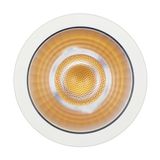





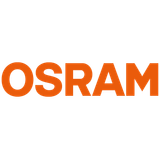


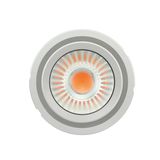


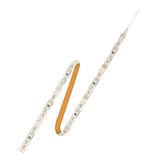

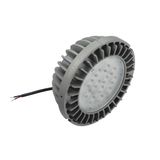

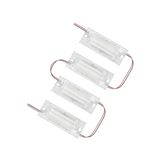
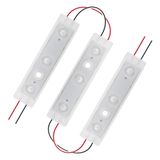




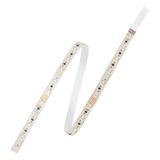


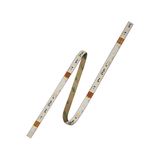
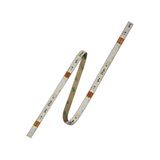
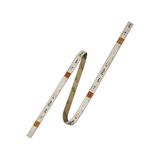
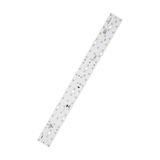
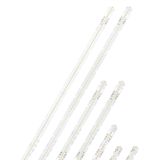

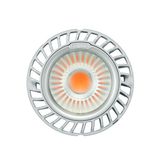

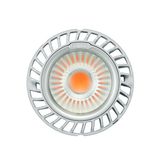


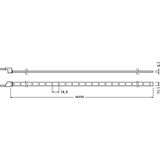
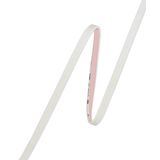

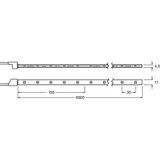
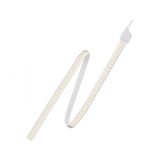
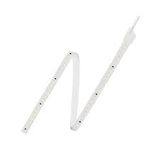
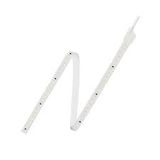



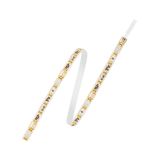
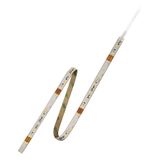

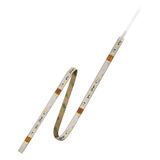
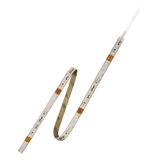
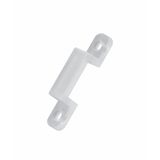
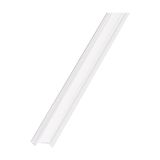
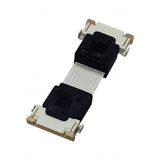

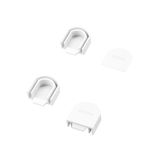
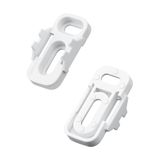
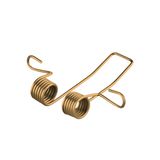
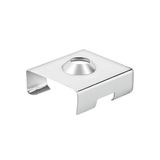
OSRAM LED Strips, Modules, Profiles and Accessories
OSRAM LED strip systems cover flexible tapes, rigid modules, aluminium profiles and small parts that turn drawings into working luminaires. For a procurement engineer, the value is in electrical window, optics, thermal path and installation time—not just lumens per meter. Below is a practical structure you can specify against, with OSRAM in every subheading as requested.
OSRAM Electrical Parameters and Standards (why they matter)
- Supply voltage: 12 V or 24 V SELV.
Why: 24 V halves current vs 12 V at the same power → less voltage drop, longer runs per feed, cooler connectors. - Power density: 4–20 W/m typical (single-white), higher for RGB/W.
Why: Dictates driver size, cable gauge, and thermal load in profiles. - Flux & efficacy: state as lm/m at rated CCT; 80–150 lm/W is common for neutral white.
Why: lm/W alone is meaningless without lm/m; procurement compares real output per meter. - Colour quality: CRI ≥80 or ≥90; SDCM ≤3 recommended for architectural work.
Why: CRI90 costs watts; use only where colour renders matter (retail, finishes) - Ingress rating: IP20 (dry interiors) / IP54–65 (dust/splash) / IP67 (exterior).
Why: Potting or sleeves raise thermal resistance; derate power in sealed runs. - Cut length & pitch: e.g., 25–100 mm cut step; LED pitch 60–240 LEDs/m.
Why: Small cut step = tight fit around features; pitch controls dotting behind diffusers. - hermal path: Tc ≤ specified; use aluminium profile for ≥10 W/m.
Why: Over-Tc shortens L70 and shifts colour. - Driver & dimming: constant-voltage drivers (12/24 V), dim via PWM; interfaces: TRIAC (with CV dimmer), 0–10 V, DALI, DMX.
Why: Select driver/dimmer as a pair; avoid mixing PWM sources. - Standards: IEC/EN 61347 (LED controlgear), IEC 60598 (luminaires), EN 62471 (photobiological), EN 55015/61000 (EMC).
Why: Needed for audit files and inspection.
OSRAM Flexible LED Strips (the tape)
OSRAM flexible strips provide the light engine for coves, shelves, signage and task lines.
- White (single-CCT): 2700–6500 K; choose CRI80 for efficiency, CRI90 for colour-critical zones.
- Tunable white: two channels (warm/cool) for 2700–6500 K mixing; requires 2-channel driver and proper control mapping.
- RGB / RGBW: 3- or 4-channel; specify true W channel (2700/3000/4000 K) when white quality matters.
- High-density variants: 180–240 LED/m + opal cover for dot-free lines in shallow profiles.
- IP-rated: gel-coated, sleeve or extruded; check bend radius and re-termination method.
Instaler notes: feed both ends on runs >5 m; for 12 V, consider centre-feed on long lengths. Keep voltage drop <5 % end-to-end.
OSRAM Rigid LED Modules (boards and bars)
For linear luminaires, under-cabinet, and back-lighting where handling rigidity helps.
- Electrical: CV 24 V most common; some boards are constant-current—verify before ordering drivers.
- Optics: on-board lenses (10–120°) available on signage/backlight modules; linear bars typically bare emitters for profile diffusion.
- Thermals: always mount to metal (Al) base or heatsink tape; use TIM pads or thermal adhesive where specified.
When to pick rigid over tape: repeatable screw-mount assembly, straight lines with fixed spacing, or when you need on-board optics
OSRAM Aluminium Profiles and Diffusers (optics + thermal)
- Profiles: surface, recessed, corner, pendant; wall-washer and deep anti-glare types.
- Diffusers: clear (max lm), opal (low UGR), micro-prismatic (balance).
- Thermal role: profiles are heatsinks—pair ≥10 W/m tape with medium/deep profiles; confirm Tc on first article
Mounting: continuous runs need expansion gaps; use clip-in or screw-through carriers. Seal end-caps to preserve IP where required.
OSRAM Accessories and Small Parts (the things that save hours)
- Connectors: solderless joins, corner links, feed-in tails; prefer crimped/soldered for high-load or IP65+.
- Cables & glands: size for current and run length; maintain SELV segregation.
- Brackets & clips: for profiles and bars; anti-vibration versions for machinery zones
- Labls & IDs: mark voltage, channel mapping (e.g., RGBW order), and driver address for service teams.
OSRAM Control with Drivers and Interfaces (make it dim properly)
- Constant-voltage drivers: 12/24 V with headroom ≥20 % over calculated load; Class II for SELV lines.
- Dimming interfaces:
- PWM dimmers inline for simple zones.
- 0–10 V / DALI CV drivers for building controls.
- DMX for façade/RGB(W) shows (use 3/4-ch decoders; budget for addressing time).
- Flicker: verify PWM frequency (≥1–2 kHz) for cameras/studios; test with phone slow-mo if needed.
OSRAM Comparison Blocks (quick decisions)
OSRAM 12 V vs 24 V Strips
Criterion | 12 V | 24 V |
| Current per meter | Higher | Lower |
| Max run per feed | Shorter | Longer |
| Cut length | Finer (shorter step) | Coarser (longer step) |
| Best for | Short accents, tight cut control | Long coves, reduced drop |
OSRAM IP20 vs IP65/67
Environment | Choose | Notes |
| Dry interior | IP20 | Highest efficacy, easiest service |
| Dust/splash | IP54–65 | Derate power; seal ends |
| Exterior/wet | IP67 | Check bend radius and cable exits |
OSRAM CRI80 vs CRI90
Goal | Choose | Impact |
| Max lm/W, utility zones | CRI80 | Efficient, adequate colour |
| Retail/finishes/skin tones | CRI90 | Lower lm/W, better rendering |
OSRAM Clear vs Opal Diffuser
Look | Choose | Watch-outs |
| Max output | Clear | Dotting if LED pitch low |
| Uniform line | Opal | ~10–20 % lumen loss, lower glare |
OSRAM Integration with Panels and Controls
OSRAM CV systems sit cleanly in control panels: 24 V rails, MCB on primary, individual low-voltage fusing on outputs. Keep SELV wiring segregated from mains. For building controls, use DALI CV drivers or gateways (DALI-DT8 for tunable white). For façades, DMX with isolated decoders and shielded data lines; terminate data runs properly.
Why Source OSRAM LED Strips, Modules, Profiles and Accessories from Bank of Lamps
- EU stock (Latvia): common OSRAM tapes (12/24 V, CRI80/90), rigid bars, profiles, drivers, and small parts ready to ship.
- Audit-ready documentation: conformity set (IEC/EMC/photobiological) bundled per BOM.
- Engineering support: we validate run lengths, driver headroom, Tc, and diffuser choice—before you cut metal.
- Consolidated B2B supply: strips + profiles + drivers + accessories under one PO to reduce freight/admin.
- Stable logistics: regular routes across EU and with predictab